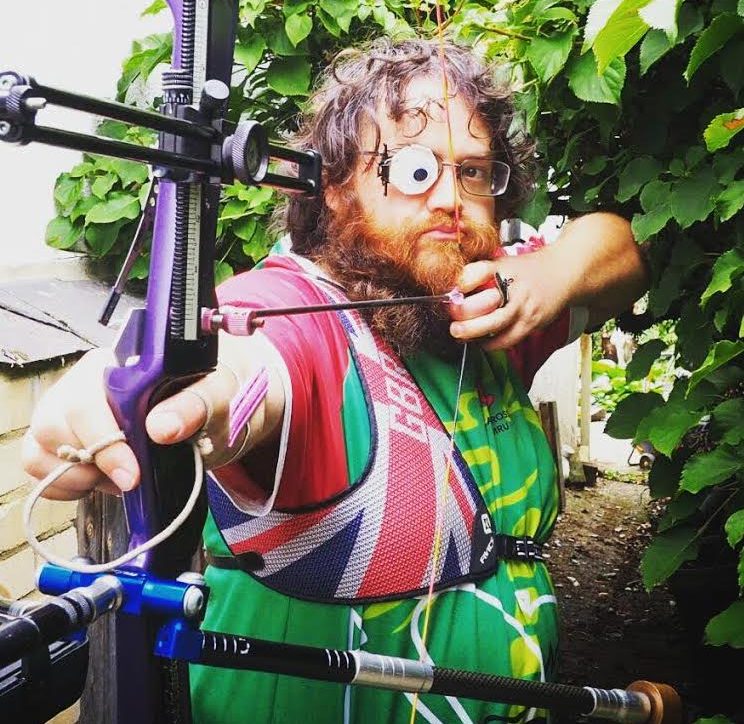Malcolm Rees has been photographing UK tournaments for almost a decade. He spoke exclusively to Bow about how he does it.
How did you get started in archery photography?
I was quite involved in my university archery club, and when I graduated and was no longer eligible to compete at the university championships, I came along to do running repairs, keep an eye on our novice archers and generally help my club out. I also took a few photographs of my clubmates so they would have some.
The following year, I also took photos of archers from clubs in our local university archery league (SWWU – South Wales & West Universities). By the year after, I was getting people from other universities asking if I could take their photo as well. It wasn’t long until I was there only to take photos of people.
Which events do you try to go to every year?
The events that I prioritise every year are the University Archery Championships – usually two to three indoor qualifying events and indoor and outdoor finals – and the British University Team Championships (BUCS), one of the loudest and most energetic shoots going.
Including times when I’ve attended as a university archer, I have attended nearly 50 BUCS events over the past 23 years, and it’s always fun to go to another host university and visit another city. I’ve been to events as far north as Aberdeen, as far south as Crawley, as east as Norwich and as west as Cardiff for university archery.
Then there are the National Tour events – there had been eight on the 2020 calendar – and the associated finals at the end of the year. There are also a bunch of national shoots, such as the County Team Tournament, the All British Field Championships, the Youth Festival, the Disability Championships and the Combined Indoors (junior, senior and Back2Back), plus any extra shoots that might ask if I can come along. It can get quite busy sometimes. Occasionally I even get to shoot.
What camera and lenses do you use and why?
My camera is an Olympus E-M10 II, which is a nice small-bodied Micro Four Thirds camera. I have a full range of lenses for it that I’ve built up over the years, including a wide-angle 9-18mm, 12-50mm, 40-150mm (my most used lens) and a 75-300mm.
My main reason for choosing this camera was I had borrowed a camera from my folks – an E-M1 – and so I could borrow lenses as I built up my collection.
Now I have a confession to make. I am not a photographer.I mean sure, I take photos, and I take enough of them that there are some good ones in there, but I always feel a little bit of a fraud when someone asks me my opinion about some camera they’re looking at. I’m sure that the latest camera from Canon or Nikon is good, but I couldn’t tell you any pros or cons about them.
I did a photo course run by Dean Alberga with a number of other archers who were interested in archery photography. The first thing Dean said was, “I’m going to assume you’re all shooting RAW and use some sort of programme like Photoshop or Lightbox to process them?” and everyone around me nodded, whereas I sat quietly thinking about the fact that I shoot in JPEG and had put a trial version of Photoshop on my laptop especially for that course, as I usually do no editing.
Like I said, I’m an archer who takes photos, but I’m not really a photographer!
How has your photography evolved since you started?
I’ve done a lot of archery photography and there is a definite difference between my early photography and more recent pictures. Most of my early photos were of three-quarter rear views of archers at full draw from a standing position.
But something I had always enjoyed doing was looking at the photos from various World Cups taken by Dean and then trying to copy the ones I liked.
This has led to more photos being taken with a slight angle – making the archer shooting slightly up looks better than slightly down – as opposed to square and level. Or dropping down to one knee to look up at the archer.
Or remembering there is more to archery than ‘full draw’. Archers setting up a shot, drawing their bow or their post-shot reaction can all make great photos.
One of the things I’ve always struggled with, and is something I think comes from being a person who takes photos as opposed to being a photographer, are the non-shooting-line photos. People warming up, coaches talking to archers, archers relaxing between ends. It’s something for me to work on.
I also find it very difficult to cut a lot of photos out of the selection. If I have two good photos of someone, I want to put them both up. But what if I have three good photos? Or four? I have spent many hours just flicking through albums, not only admiring some of the fantastic photos but also trying to remember some of the variations.
What the archer is doing, where the photographer is standing in relation to the archer, the height of the camera from the ground. I try to work out what makes that photo better than one I might take.
What gives you the most satisfaction about making images?
Something I have always wished I had was the patience to get good enough to draw or paint the pictures I can see in my imagination. Failing that, photography is the next best thing.
Though that comes with its own set of problems as, unlike with drawing, in photography you are hampered by real life: a telegraph pole poking out the top of someone’s head, a longrod sticking out of their mouth, the sun in the wrong position, someone blocking your view.
But sometimes everything falls just right, and you get that picture exactly how you thought it should be.
Dealing with podiums
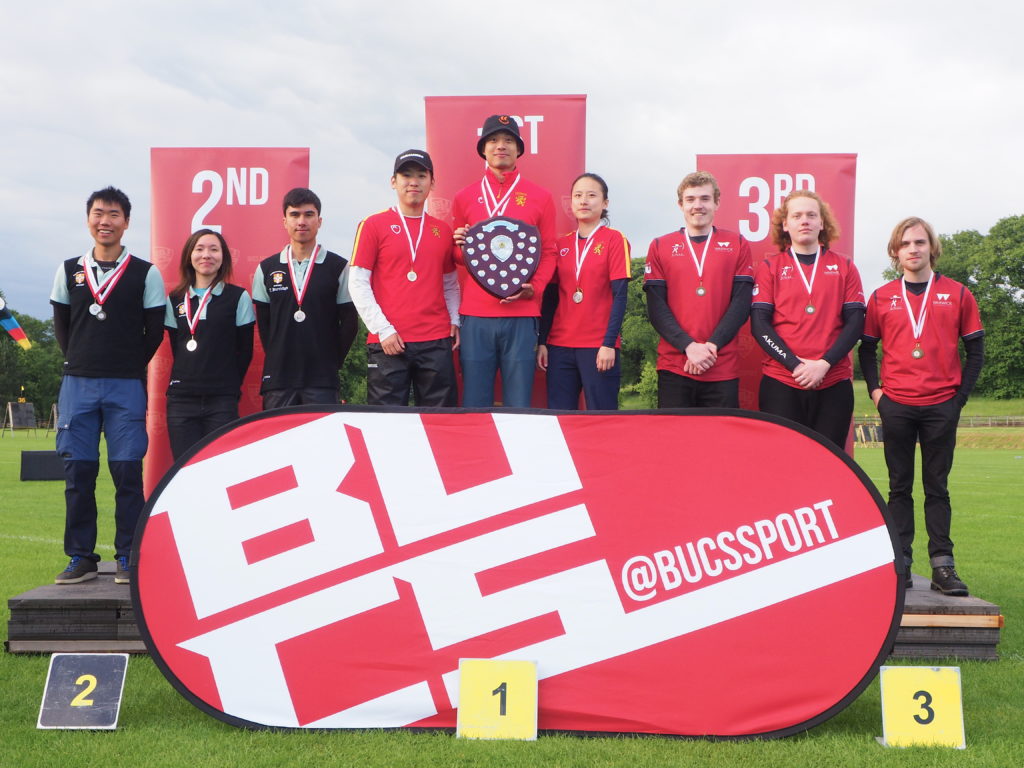
If you are ever at a shoot in any sort of official capacity, it’s always a good idea to speak to the organiser when it comes to prize giving, as if you can have the podium arranged so the sun is lighting the archers, rather than backlighting them, it makes your life a bit easier.
In the case of shoots with lots of awards, I will often set my camera up on a tripod as this allows me to lock the camera settings. This includes putting the camera in multi-shot because if you only take the one photo, you will have someone with their eyes closed.
Be ready to shout to get their attention, tell them to smile – and be prepared for someone with a phone camera to come stand in front of you.
Too much grass
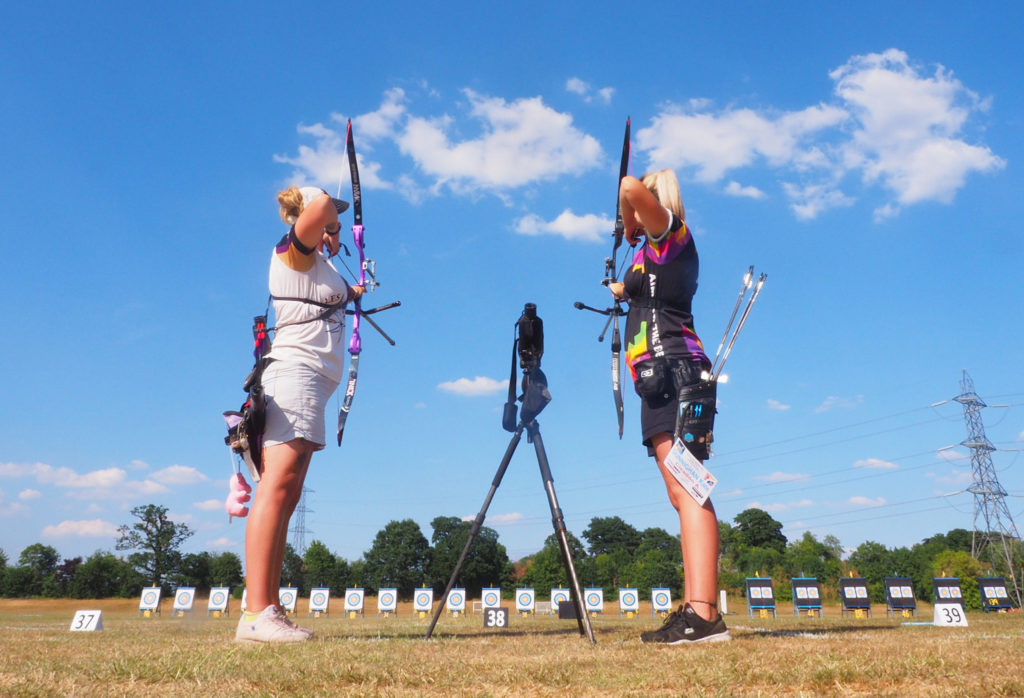
There is an easy way to decrease the sea of grass that often appears in archery photos, and that’s just to lower the height of the camera slightly and look up at the archer.
This is a wide-angled shot, but because the camera is low to the ground and looking up, the grass doesn’t get above the archers’ shoes. Instead, we get an impressive blue sky. Being in the UK, however, means blue sky isn’t always an option.
Getting low
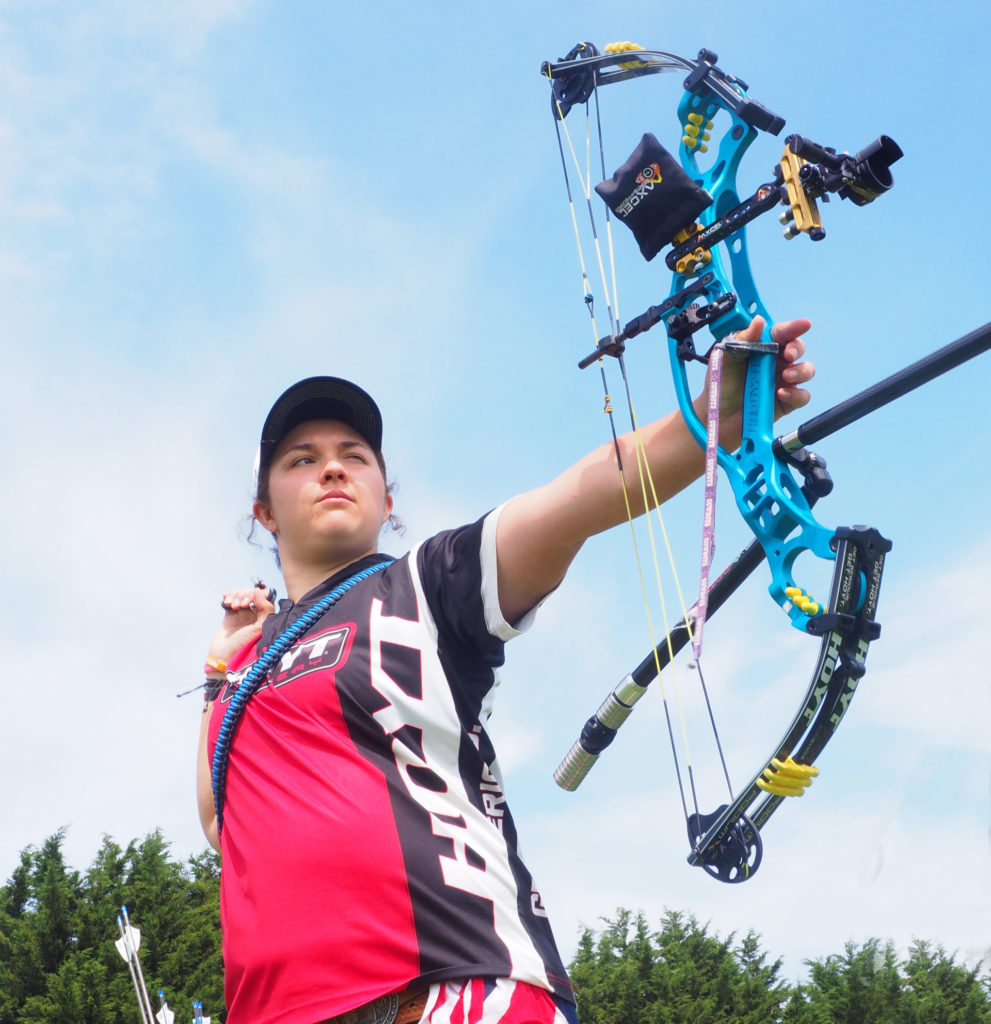
In this case, I am literally lying on the ground looking up. This particular photo was taken at Evesham, which has a south-facing field. This means on a sunny day, you are often struggling with the sun because it is lighting up the front of the archer, but you are stuck behind them.
You couldn’t do this at a north-facing ground like Lilleshall as the sun would be sitting behind the archer, making the exposure near impossible to get.
Picking out the details
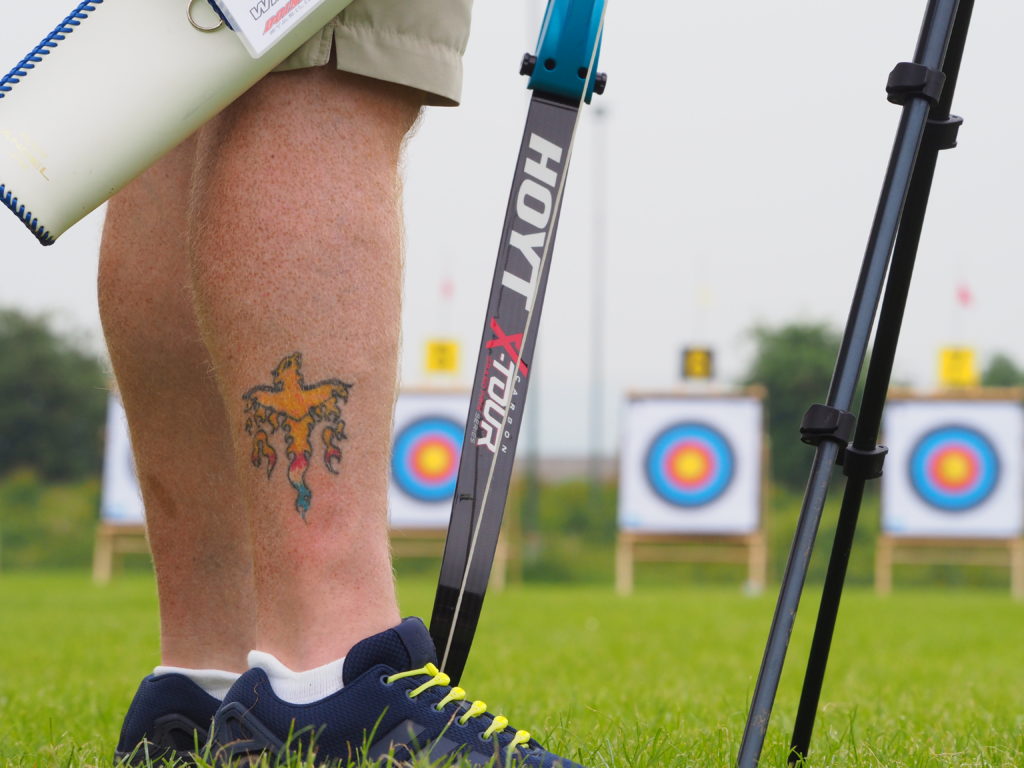
Archery is a sport in which there are a lot of small details, but you have to be on the lookout to spot them and, once spotted, try to work out the best way to photograph them. In this case, a bow-shaped phoenix tattoo.
If taken from a standing height, all you would have as a background is the surrounding grass, but by dropping down to shoe level, it is possible to
have a much more interesting background.
This is zoomed in, which will change the size of the background objects. If you had simply moved closer, the object of interest might well have remained the same, but the background would not.
Field action
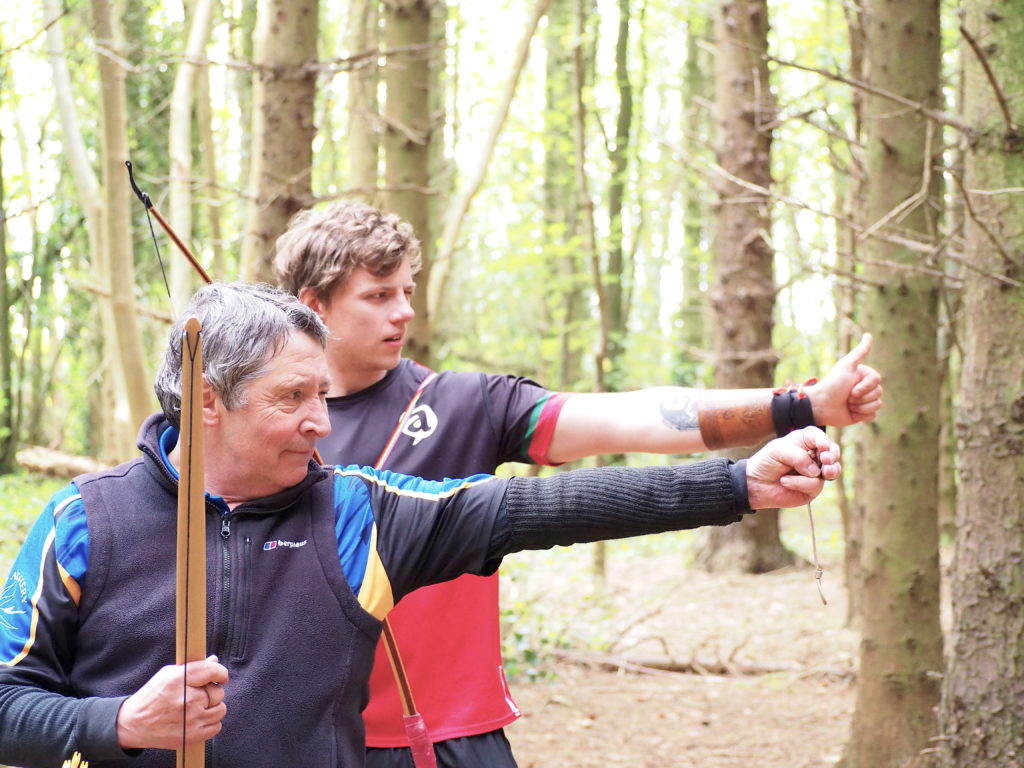
It is often left to pre and post shots to get action into your photographs. What this usually means is keeping your camera handy and your eyes
open in case something appears in front of you that would make a great shot.
In-flight
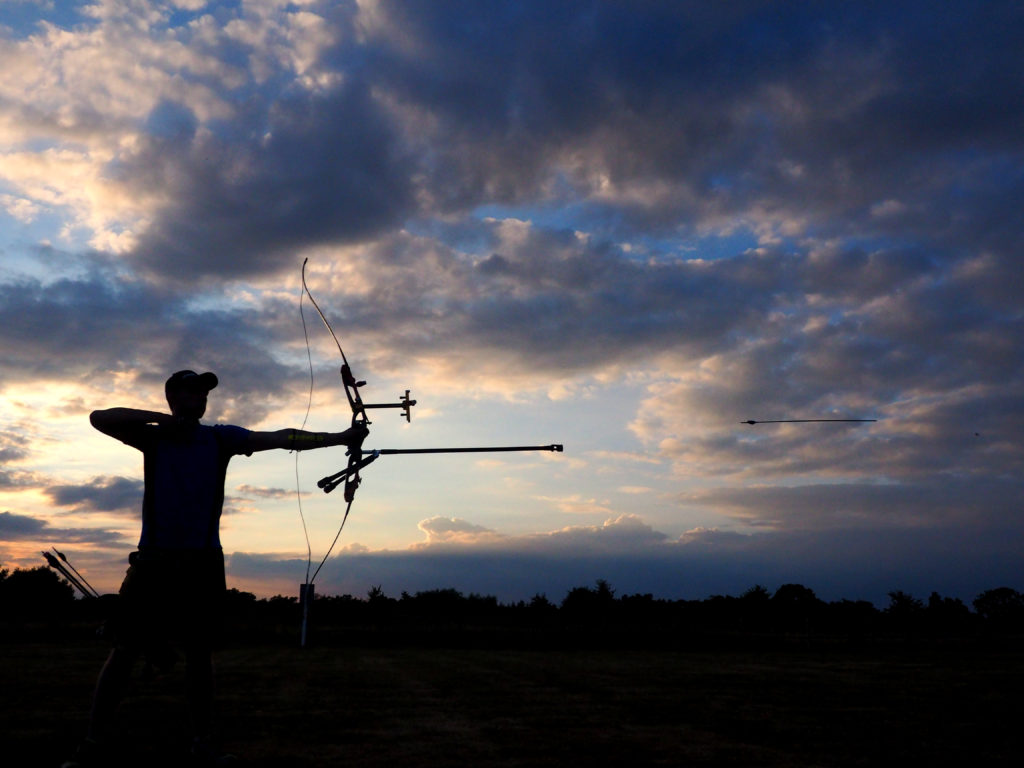
This is one of the few photographs where I have purposely gone out to take a particular type of shot (silhouette/arrow in flight).
It involved borrowing one of my clubmates and making them shoot several arrows while I had the camera set to take as many photos in a burst as it would, at the fastest frame rate that it would.
For the half a dozen or so pictures that had the arrow in flight, there were about 400 that were either ‘archer at full draw’ or ‘post-shot, but arrow has left the frame’.
Decisive moments
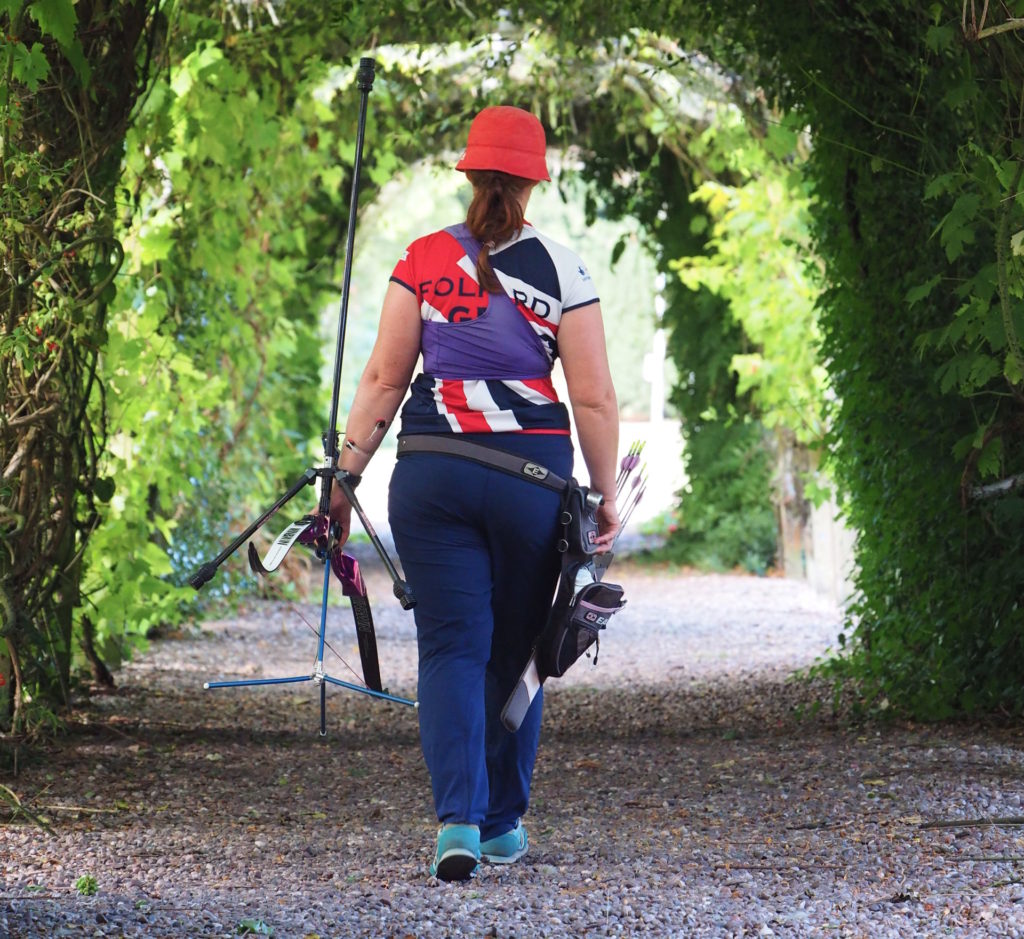
Not all shots need the archer to be shooting, or even to be pulling a face, for there to be something in it. This photograph of four-time (so far) Olympian Naomi Folkard walking off the finals field at Lilleshall has remained a favourite of mine since I snapped it at the end of the testing of the finals field for the Youth Festival. There was no planning or forethought behind it. I just happened to look down the path as she walked away, dropped to one knee and took the snap.


